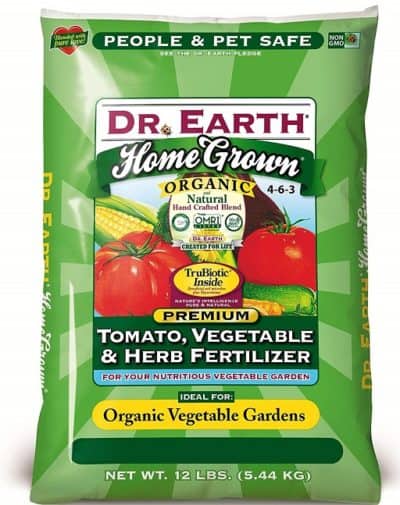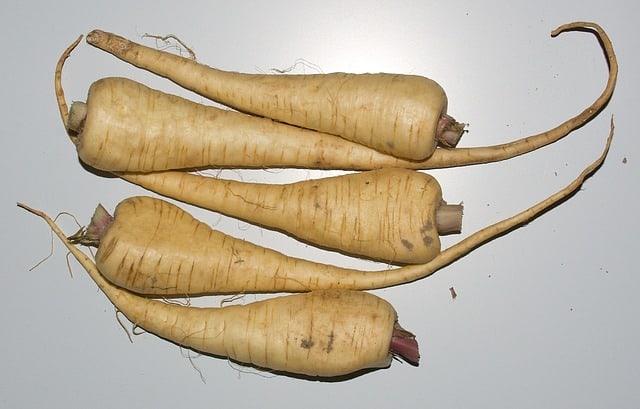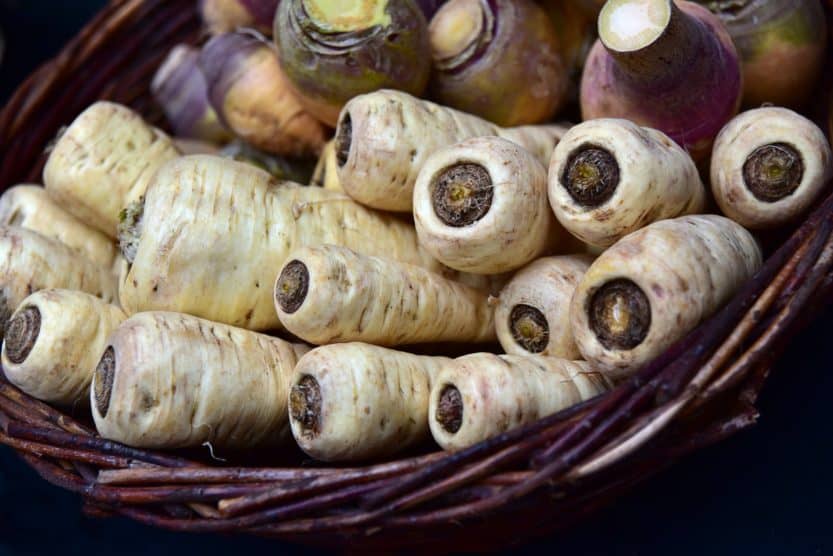Parsnips are a relative of the carrots and this root crop takes up minimal space while delivering a high yield of large roots. Parsnips are a very good source of vitamin C, vitamin K, and folate.
Buy Parsnip Seeds Online
| Image | Name | Rating | Shop |
|---|---|---|---|
 | Heirloom Parsnip Hollow Crown | ||
 | Botanical Interests, Seed Parsnip Turga Organic | ||
 | Parsnip, All American, Heirloom, Organic |
Parsnip Varieties
Parsnips are a pale white root that tends to be thicker than a carrot and also packs more calories per pound than carrots. When choosing a variety, the most import thing to consider is your soil condition. As long as you have soil that is friable and relatively free of rocks, parsnips should do well. If your soil is dense and/or has lots of rocks, you can find a few varieties of parsnips that will produce short stout roots, which will still do well under those conditions.
When Should I Plant Parsnips?
Parsnips require a long season to grow, which necessitates starting your plants as early as possible; and it’s best not to transplant parsnip seedlings because this will deform the roots. In most climates, the best time to plant parsnips is three weeks before your last frost.
Germinating Parsnips
Parsnip seeds are notorious for their slow germination, so you should plant them as soon a possible. If you prefer to start the seeds indoors, you can place some seeds on a moist paper towel, but you must immediately plant them, once you see the seed germinate. This pre-sprouting technique can increase the seeds’ usually low germination rate.
Planting Parsnips

Parsnip Soil Requirements

Parsnips need a rock-free, fine soil (Buy Online) that is free of obstructions, in order to produce straight, fork-free roots. If you cannot reasonably provide these conditions, you can always set up a raised bed for your parsnips.
If you plan on planting your parsnips into the native soil, be sure to till your soil deeply, sifting out any rocks you might find along the way. If your soil is hard or it has a high clay content, you can add sand and compost, in order to loosen up the soil structure.
Parsnip Fertilizer Requirements

Parsnips need a relatively fertile soil, so try adding a balanced, time-released fertilizer (Buy Online) when you till the beds, as this will help the plants get off to a good start. Parsnip seedlings have a hard time pushing through the soil, which can lead to poor germination rates.
Parsnip planting Distance
The seeds should be planted no deeper than 0.125 inches (0.3 cm) and be spaced 4 inches (10 cm) apart. Once you have planted your seeds, you should soak the bed gently, being very careful not to expose the shallowly planted seeds.
For the first 1 to 3 weeks, you should regularly water the seeds, as they are very slow to germinate. Always be careful not to expose any seeds while watering; and if you see any seeds emerging from the soil, gently cover them with a thin layer of soil. Once the seedlings emerge, they will be very fragile and care should be taken not to damage them while watering or weeding.
Parsnip Cultivation
If weeds do become a problem early in the season, then carefully pinch the weeds out from in between the parsnips. Once the parsnip seedlings have grown to a height of about and 2 to 3 inches (5 to 7.5 cm), you can consider adding mulch to the planting area, in order to limit any further weed growth.
Parsnip Care & Harvest

Thinning Parsnips
As your parsnips get larger, you can begin to thin out the weaker plants, in order to allow the healthiest plants to develop large, thick roots. You can continue to thin the beds for another couple of weeks until you are satisfied that the parsnips are not overcrowded and that all small and weak plants have been removed. This is a very necessary step, as even strong healthy parsnips will suffer, if left in a crowded bed all season, thereby producing thin, malformed roots.
Parsnip Pests and Diseases

Check for pests throughout the season, and one such insect is the Black Swallowtail butterfly. While some may find this bug attractive, if you see it hovering around your plants, then promptly check the foliage for any caterpillars and remove them immediately or apply an organic insecticide (Buy Online).
Other pest problems are usually closer to the ground, such as the carrot rust fly, which can damage the parsnips roots; and nematodes can also cause problems, so always check the base of your plants for any signs of damage.
About 120 to 180 days after you planted your parsnips, you can begin to see if any are ready to be harvested. You can gently push the foliage back and look for root crowns that are starting to push out above the soil line.
When are Parsnips in Season?
Parsnips are usually ready to harvest when the crowns are 1 to 2 inches (2.5 to 5 cm) thick. Some parsnips may even have crowns that are 4 to 5 inches (10 to 12.5 cm) thick, depending on variety.
Can You Leave Parsnips in the Ground Over Winter?
Parsnips get sweeter if they are exposed to freezing temperatures, so try leaving them in the garden well into the late fall and early winter. Parsnips will keep in the ground all winter long in most climates, so be sure to harvest all the parsnips before the spring comes, or the roots will become woody and fibrous.
Storing Parsnips for Winter
If you choose to store the parsnips inside, they will keep for up to 6 months in the refrigerator, if they are kept at a high relative humidity. Another option is to chop the parsnips up, blanch them then place them in bags for storage in the freezer.





